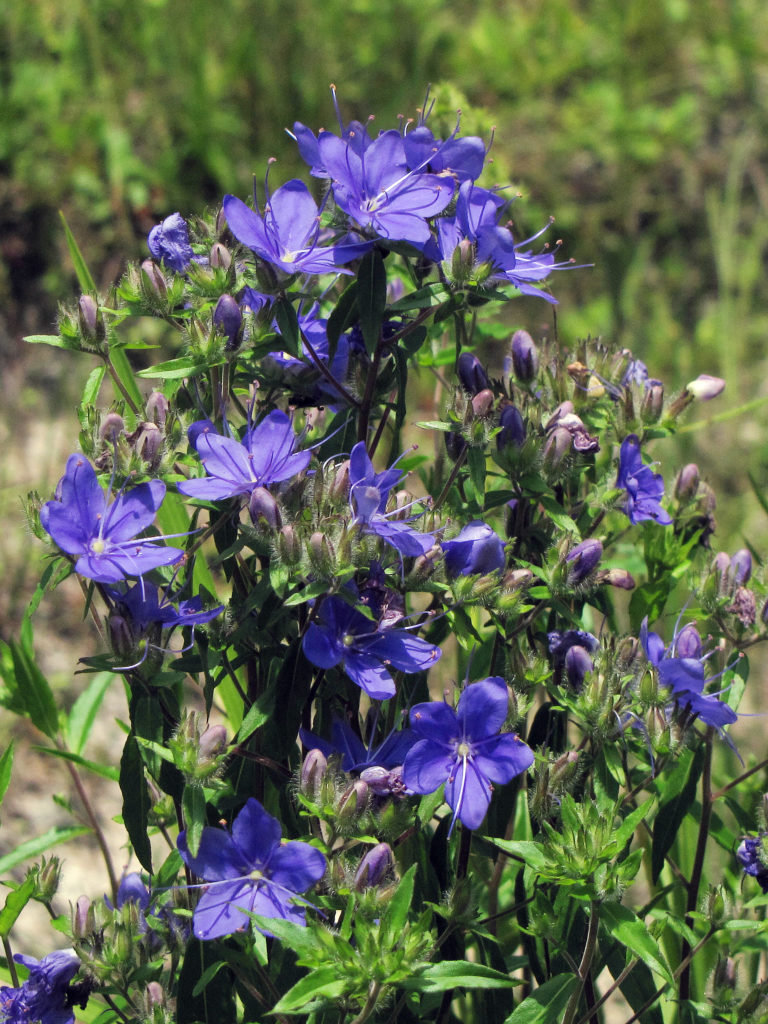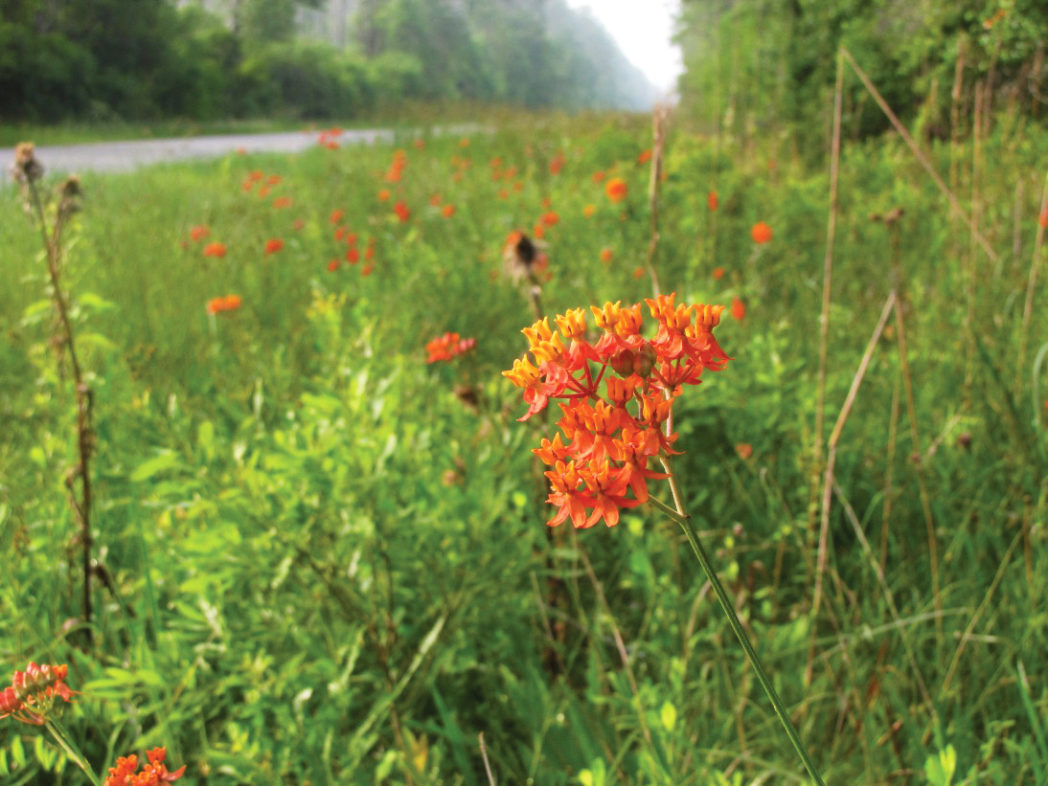Bloom Report: Summer wildflower viewing
Pictured above: Fewflower milkweed (Asclepias lanceolata). Photo by Jeff Norcini
Spring and fall wildflowers can be spectacular with a plethora of yellow and purple flowers, but summer seems to offer a wider diversity of colorful, showy wildflowers along roadsides:
- the white flowers of Shortleaf rosegentian (Sabatia brevifolia) with a whiteness that seems to rival that of high-quality, bright white paper;
- the exquisite beauty of the satiny pink rosegentians like Largeflower rosegentian (Sabatia grandiflora);
- the stunning blues of Skyflower (Hydrolea corymbosa) (pictured, right) and Blue sage (Salvia azurea);
- the brilliant yellows of milkworts — Tall pinebarren milkwort (Polygala cymosa) and Low pinebarren milkwort (Polygala ramosa);
- the vivid oranges of Fewflower milkweed (Asclepias lanceolata) (pictured above) and Butterfly milkweed (Asclepias tuberosa) that are easily spotted from a distance (in what other season is it so easy to see orange wildflowers?);
- the vibrant red of Scarlet hibiscus (Hibiscus coccineus) with its huge flowers, and the regal red of Cardinalflower (Lobelia cardinalis), whose flowers can be easily seen from a distance.
Often, two or three or more of these wildflowers occur together, making the aesthetic impact all the more impressive. Many of these species occur in moist swales and ditches along roadsides in rural areas, especially roadsides adjacent to natural areas and in pine forests maintained by burning.

Coastal areas and beaches are also a good place to see summer blooms, such as blanketflower (Gaillardia pulchella), dune sunflower (Helianthus debilis), railroad vine (Ipomoea pes-caprae subsp. brasiliensis), seaside goldenrod (Solidago sempervirens), and spotted beebalm (Monarda punctata).
When you are out and about, enjoying the summer beauty that Mother Nature has blessed us with, please don’t pick wildflowers. If you want to preserve the memory of a wildflower, take a picture — it will last longer. Many of our native wildflowers reproduce only by seed. Picking a flower reduces the ability of that plant to reproduce and for that population of wildflowers to sustain itself.
If you want to pick wildflowers, plant some in your yard or in containers on your patio or porch. Wildflower seed packets are available in the Foundation’s shop, or from the Florida Wildflower Seed and Plant Growers Association. Seed packets of Florida native wildflowers also may be available at garden centers specializing in Florida native plants. To find a native garden center near you, visit the Florida Association of Native Nurseries’ website.
Take Action: Contact your county maintenance yard supervisor to ask that wildflowers in specific locations be spared. On state and U.S. highways, contact your Florida Department of Transportation District Wildflower Coordinator. To find your District Wildflower Coordinator, visit www.flawildflowers.org/resolution.php.
Dr. Jeff Norcini has a consulting business, OecoHort, LLC, and is FDOT’s wildflower specialist, Tallahassee.

